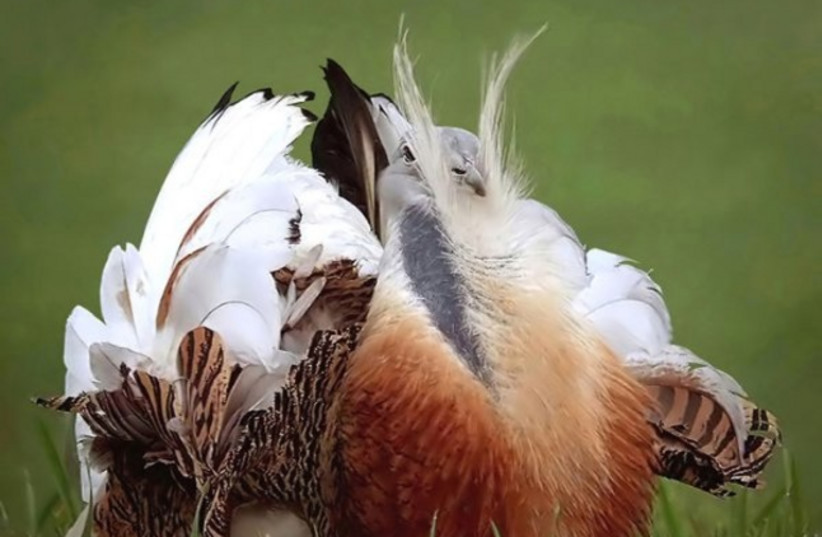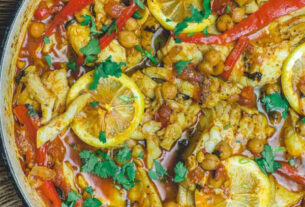When the great bustard (Otis tarda) – the heaviest living bird capable of flight – doesn’t feel well in the wild, it doesn’t make an appointment with a veterinarian. Instead, the impressive, colorful and threatened species seems to self-medicate with specific plants for which it searches.
The ground-nesting bird – found in open grasslands and farmland from northern Morocco, South and Central Europe to temperate Central and East Asia – has been listed as “vulnerable” on the International Union for Conservation of Nature’s Red List since 1996, and Portugal and Spain now have about 60% of the world’s population.
The largest of flying birds became extinct in Great Britain when the last bird was shot in 1832; recent attempts to reintroduce it into England have met with some success, and there are some 40 great bustards on Salisbury Plain, a British Army training area.
But now, a study in Frontiers in Ecology and Evolution entitled “Bioactivity of plants eaten by wild birds against laboratory models of parasites and pathogens” suggests that great bustards have another claim to unusual habits – they seem to actively seek out two plants with compounds that can kill pathogens. They thus are a rare example of a bird that uses plants against disease – that is, practicing self-medication.
A bird that self-medicates
Two plant species are eaten by great bustards more often than expected from their abundance – corn poppies (Papaver rhoeas) and purple viper’s bugloss (Echium plantagineum). Fatty acids abound in corn poppy seeds, while the bugloss seeds are rich in edible oils.
“Here we show that great bustards prefer to eat plants with chemical compounds with antiparasitic effects in vitro.”
Dr. Luis Bautista-Sopelana
“Here we show that great bustards prefer to eat plants with chemical compounds with antiparasitic effects in vitro,” said Dr. Luis Bautista-Sopelana of Madrid’s National Museum of Natural Sciences and the study’s first author.
Co-author Dr. Azucena Gonzalez-Coloma at the Spanish capital’s Institute of Agricultural Sciences added that “great bustards seek out two species of weeds that are also used by humans in traditional medicine. We show that both contain antiprotozoal and worm-killing compounds, while the second also contains antifungal agents.”
Self-medication in animals is suspected to occur, with a lesser or greater degree of confidence, in animals as diverse as primates, bears, deer, elk, macaws, honeybees and fruit flies. But it’s tricky to prove beyond doubt in wild animals, warned Bautista-Sopelana: “We can’t compare between control and experimental treatments. And double-blind trials or dose-effect studies – obligatory steps in human or veterinary medicine – are obviously impossible in wild animals.”
Males gather at chosen sites to put on an audiovisual show for the visiting females, who choose a mate based on his appearance and the quality of his “showbirdship.” “In theory, both sexes of great bustards might benefit from seeking out medicinal plants in the mating season when sexually transmitted diseases are common ̶ while males that use plants with compounds active against diseases might appear more healthy, vigorous and attractive to females,” said Gonzalez-Coloma.
“Great bustards select corn poppies and purple viper’s bugloss mainly in the mating season, in April, when their energy expenditure is greatest,” Bautista-Sopelana said. “And males, who during these months spend much of their time and energy budgets on sexual display, prefer them more than females.”
Of these two plant species, the first is avoided by cattle and is used in traditional medicine as a pain reliever, sedative and immune booster. The second is toxic for humans and cattle if eaten in great quantities.
The authors conclude that great bustards are prime candidates for birds that seek out specific plants to self-medicate, but they suggest that more research is needed. “The ultimate proof of self-medication requires experimental protocols developed in the biomedical, veterinary and pharmacological sciences,” said Bautista-Sopelana. “Until then, we continue with our fieldwork.”




